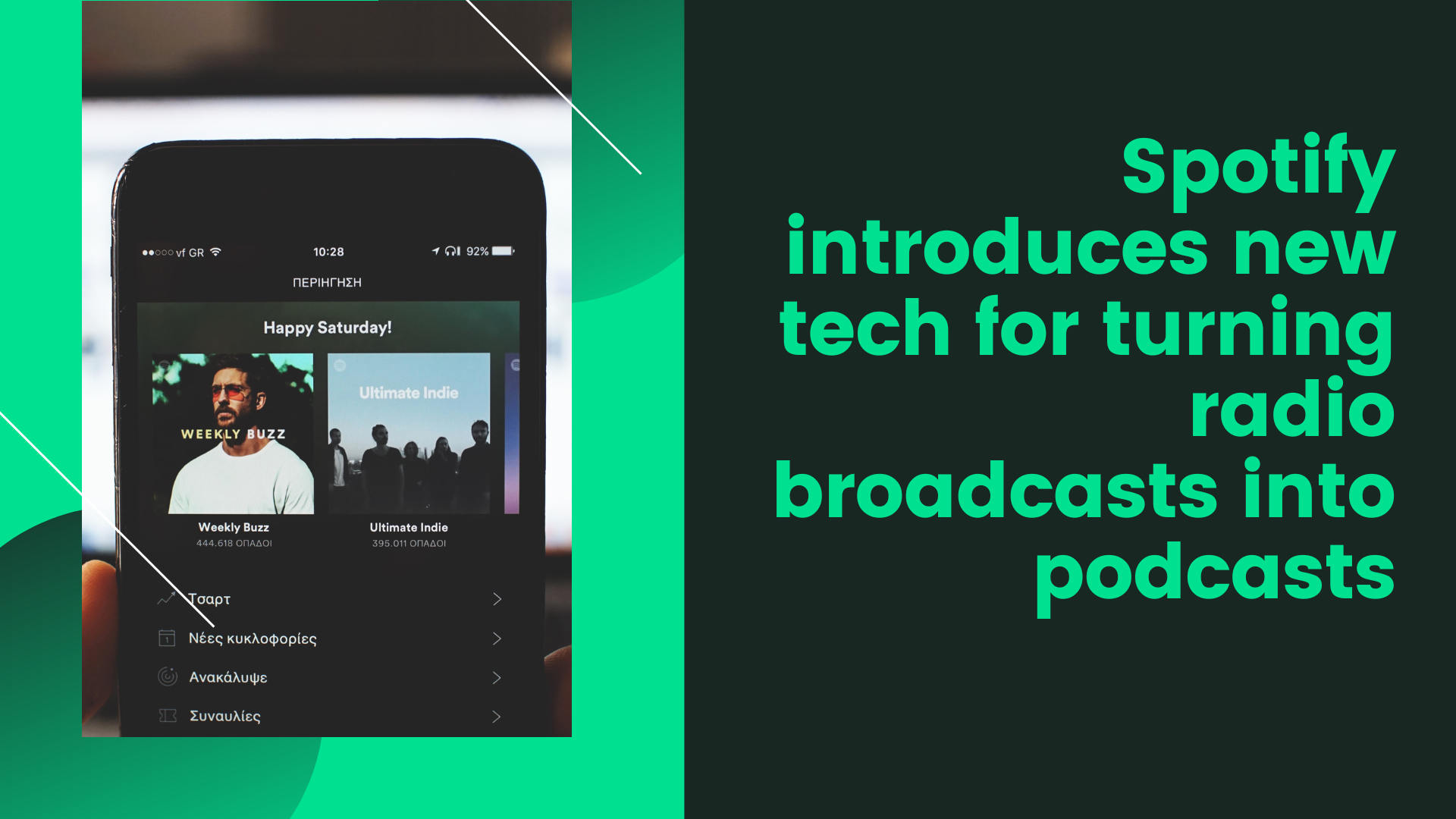
Spotify today is introducing new technology that will give radio broadcasters the ability to turn their existing audio content into podcasts, or what it’s calling “broadcast-to-podcast.” Based on the IP Spotify purchased in the latter half of 2021 from an Australian-based podcast technology business called Whooshkaa The features will soon be incorporated into Spotify’s corporate podcast tech platform Megaphone which is already being utilized for use by Fox Audio Network as well as other clients.
The streamer describes how technology allows broadcasters to reach new audiences in the wake of the switch towards streaming audio, which could be affecting their audience. According to the data in the Edison Research report for Q3 2022, the amount of time that people listened to the radio on the internet was up by 50 percent between 2022 and 2019. Spotify said as more listeners are tuning in using their mobile devices.
In some ways, those growths could have been caused by the COVID-19 virus which saw a rise in people working at home and fewer driving between work and home. It’s also linked to a change in the way that people want to consume audio programming and podcasts have risen in popularity as a substitute for broadcast radio shows. The data suggests that a significant part of the increase occurred before the security measures for pandemics were in place, with streams increasing between 8% and 11% between the years 2019 and 2020, for example, and then increasing to 12% by 2022.
Additionally, citing research from Pew Research, Spotify suggests that its latest product offers better ways to reach an increasingly young, Gen Z audience who nowadays prefer to consume their news via digital channels such as podcasts.
Furthermore, Spotify pointed to eMarketer projections of podcast advertising spending that it expects to be almost $2.2 billion by 2023 as a further reason broadcasters should think about how they can adapt their podcasts to listeners.
The purpose of Spotify is to have access to a wider range of audio programs without the need to sign expensive exclusive agreements with podcast studios or individual podcasters like it has previously been done with people such as Joe Rogan, Alex Cooper, and many others. Once it’s in the system, the audio broadcast can be made monetized through ads, much as any other podcast.
Spotify states that its technology will detect appropriate spots for advertising in the newly imported audio once an initial setup process has been completed. Traditionally, the process of converting broadcasts into a podcast by hand would have required publishing teams anywhere from 30 to 60 minutes for each podcast, Spotify states, such as downloading the program on the radio service, taking out the ads, and putting up new ad markers and uploading it back to the podcasting platform.
When you consider the size of a broadcaster publisher who has to deal with hundreds of shows each day across a large television network, this hand-written method is not feasible.
With the Megaphone platform, Spotify’s customers can now select to use the auto-identified markers for ads to reduce time or could choose to take them off in lieu of their own. This enables the client to earn revenue by introducing dynamically-reinserted ads. Publishers can use the Spotify Audience Network to help them make money from any inventory that is not sold.
“The way listeners engage with audio is constantly changing and we know that digital audio is increasingly becoming their preferred way to listen, especially Gen Z,” stated Emma Vaughn, Spotify’s global director for Advertising Business Development & Partnerships in a statement regarding the announcement. In an article on the blog, the chief executive pointed out that, of the millions of users it is able to reach more than 50 percent in Gen Z and millennials across the U.S.
“With this new broadcast-to-podcast feature, we’re empowering radio publishers to reach existing audiences throughout their day, but to connect with new, younger audiences,” Vaughn said.
Source:- Yahoo News / Entertainment
